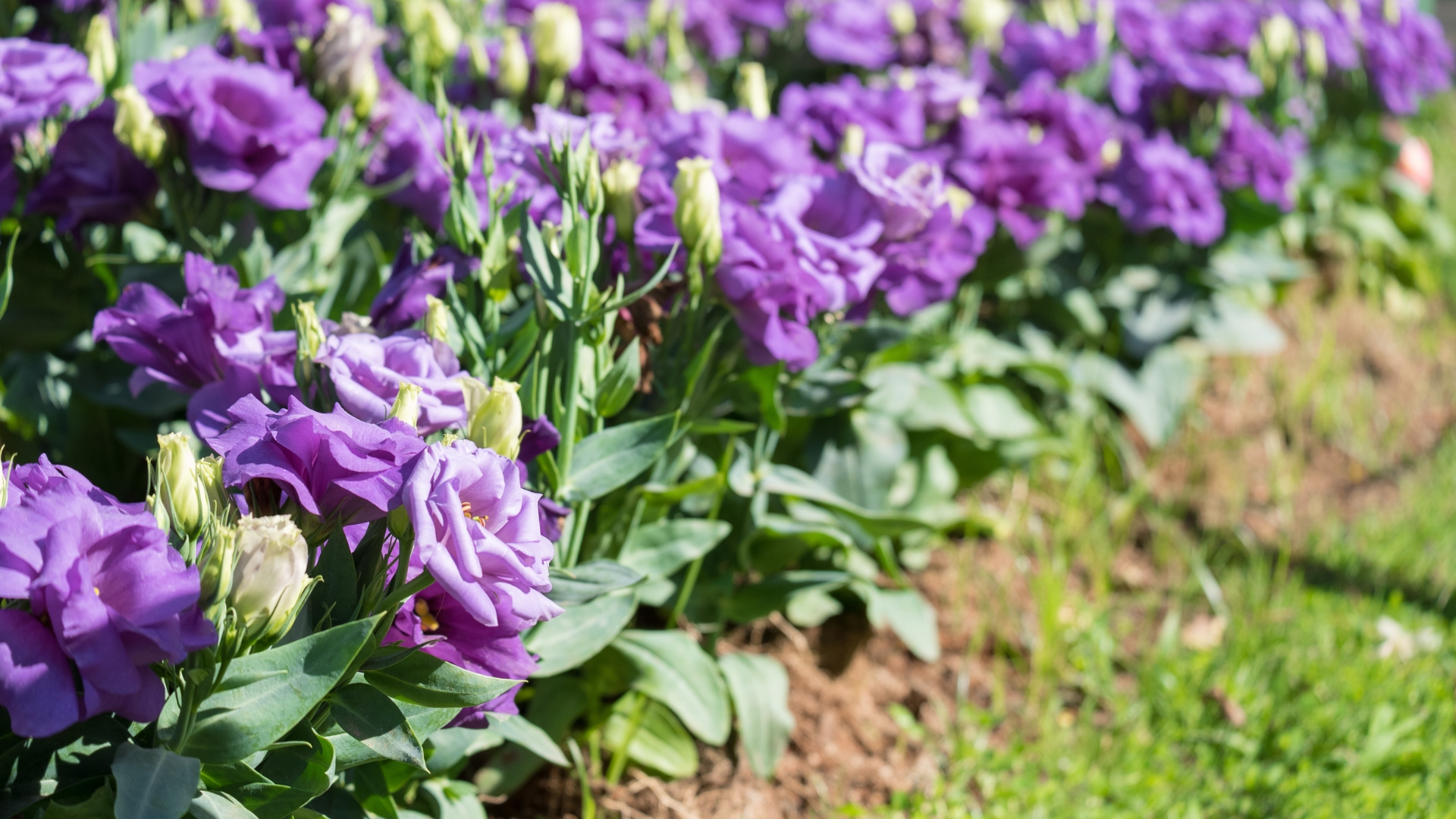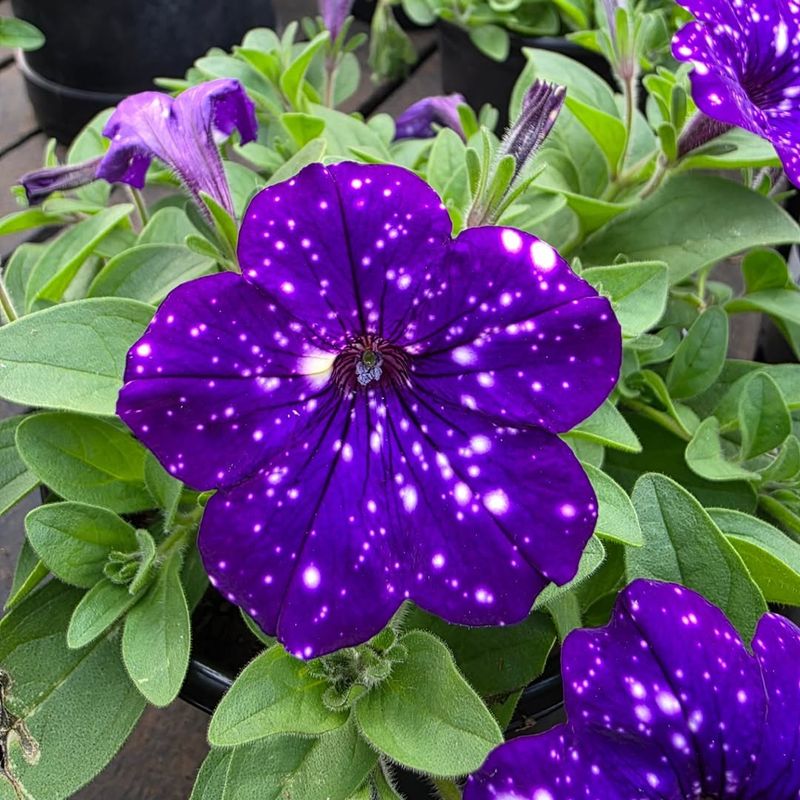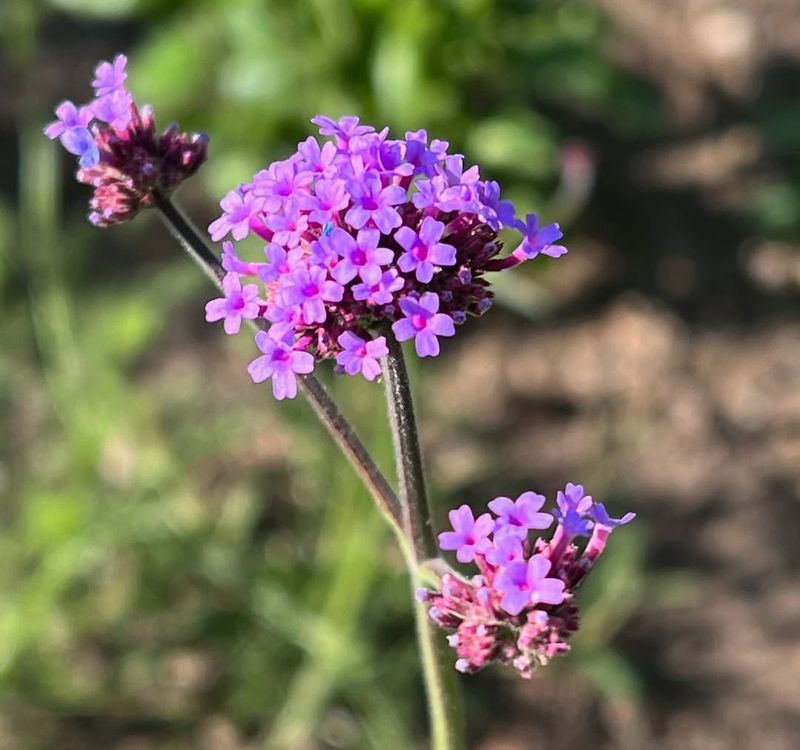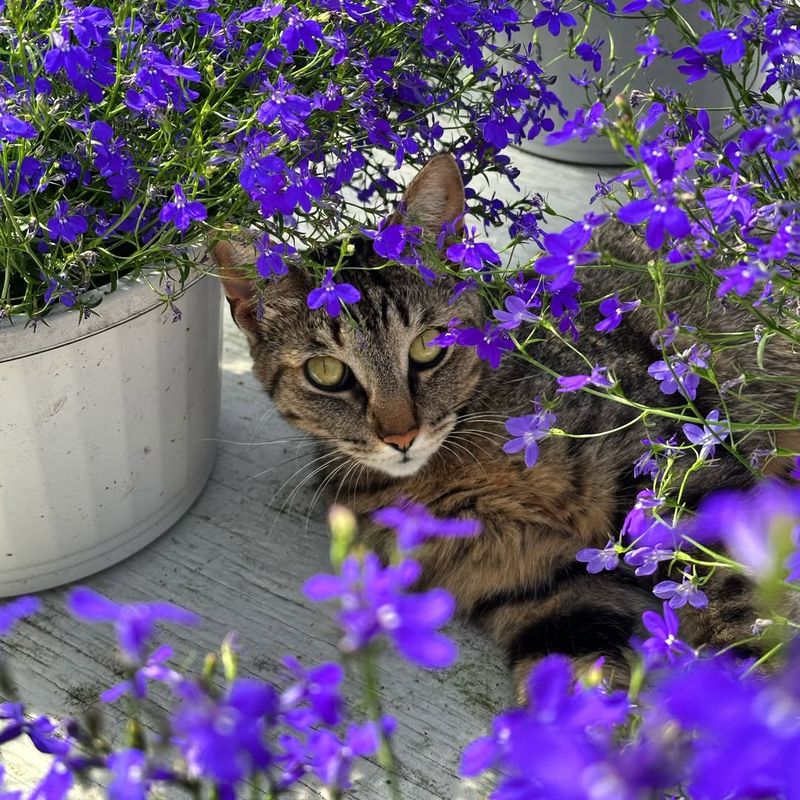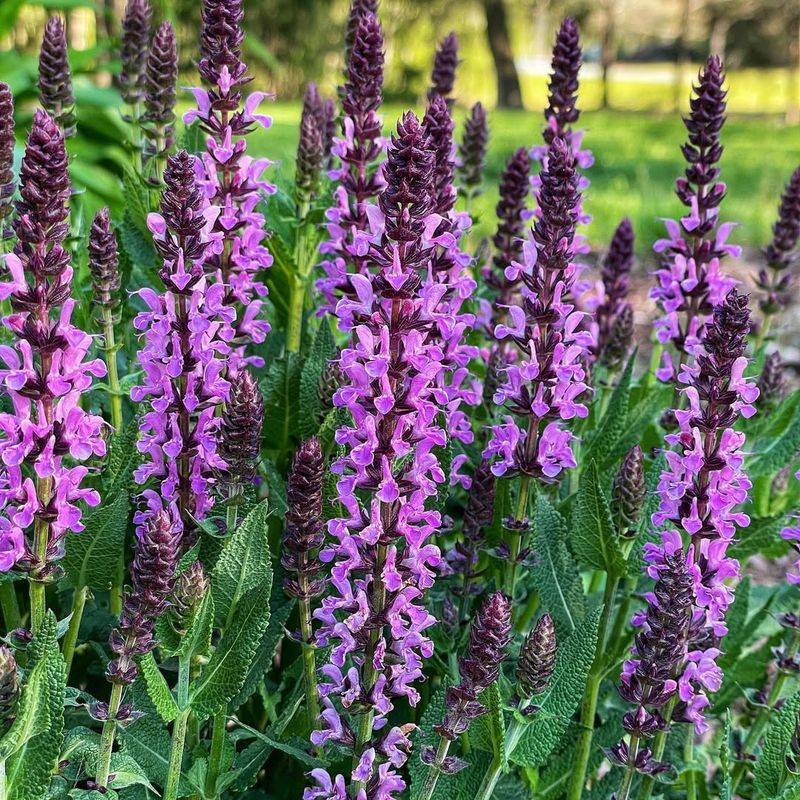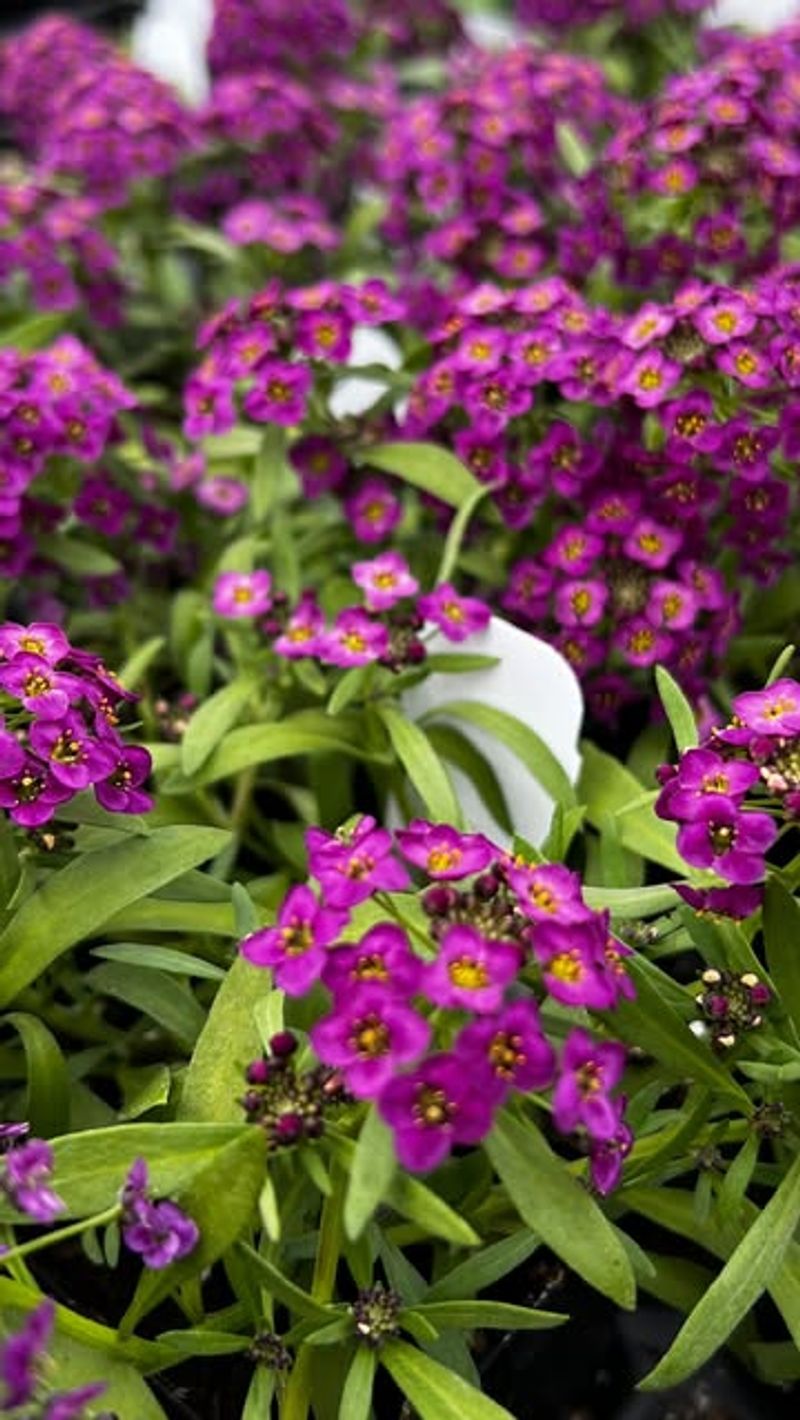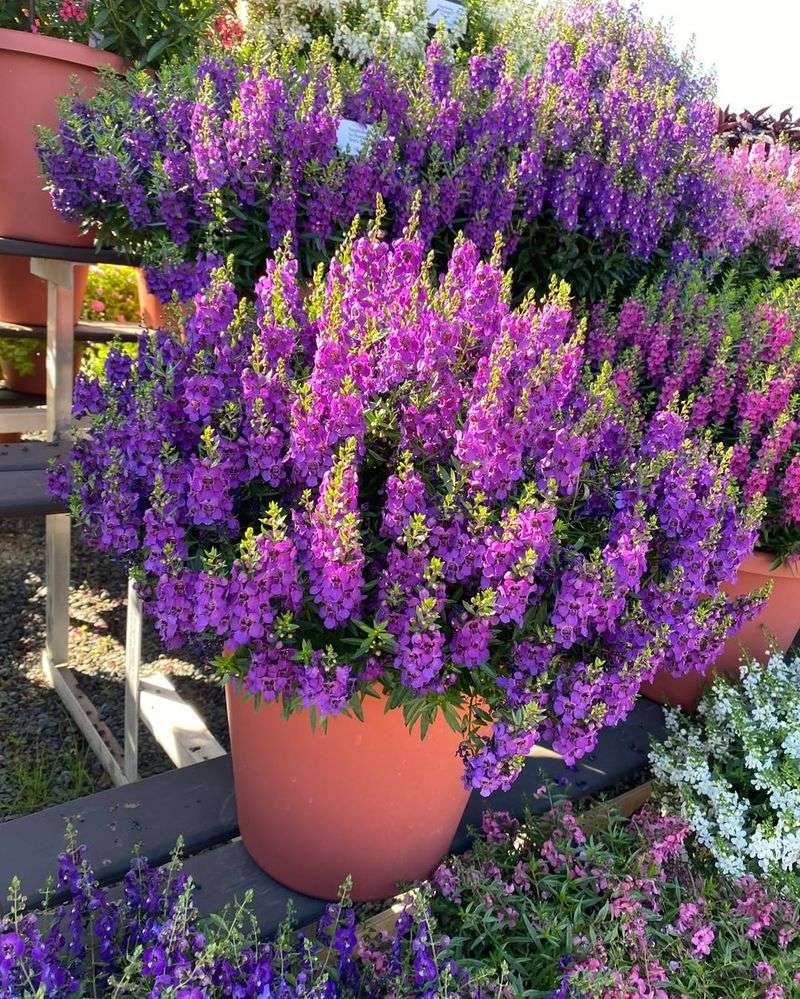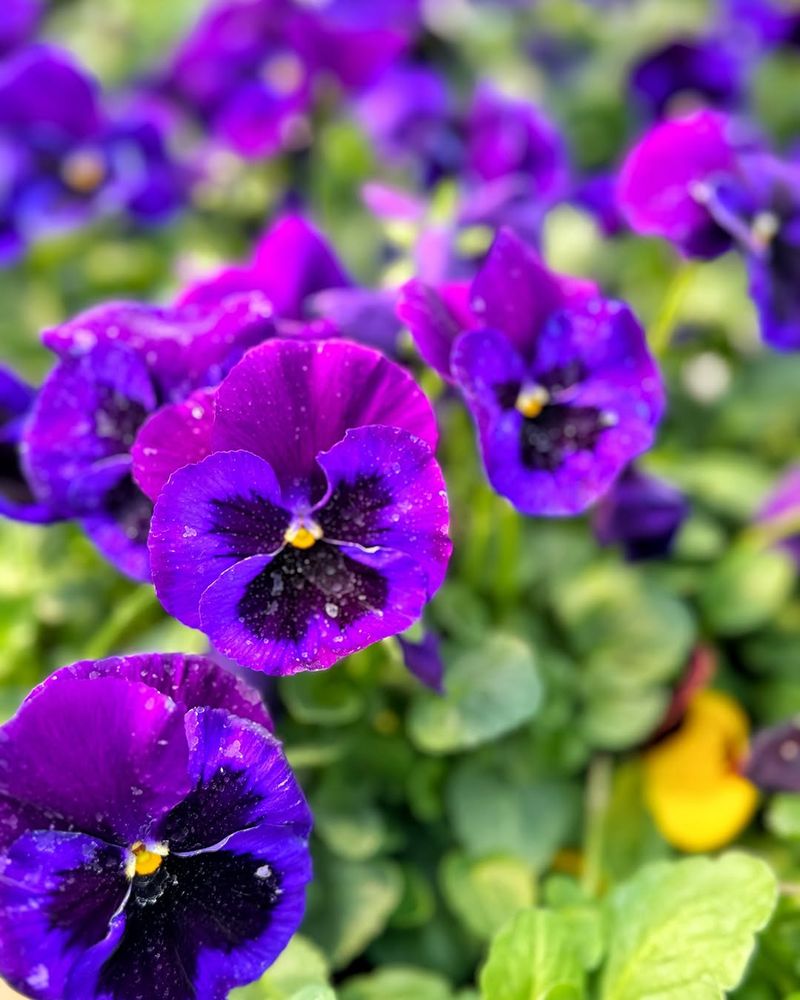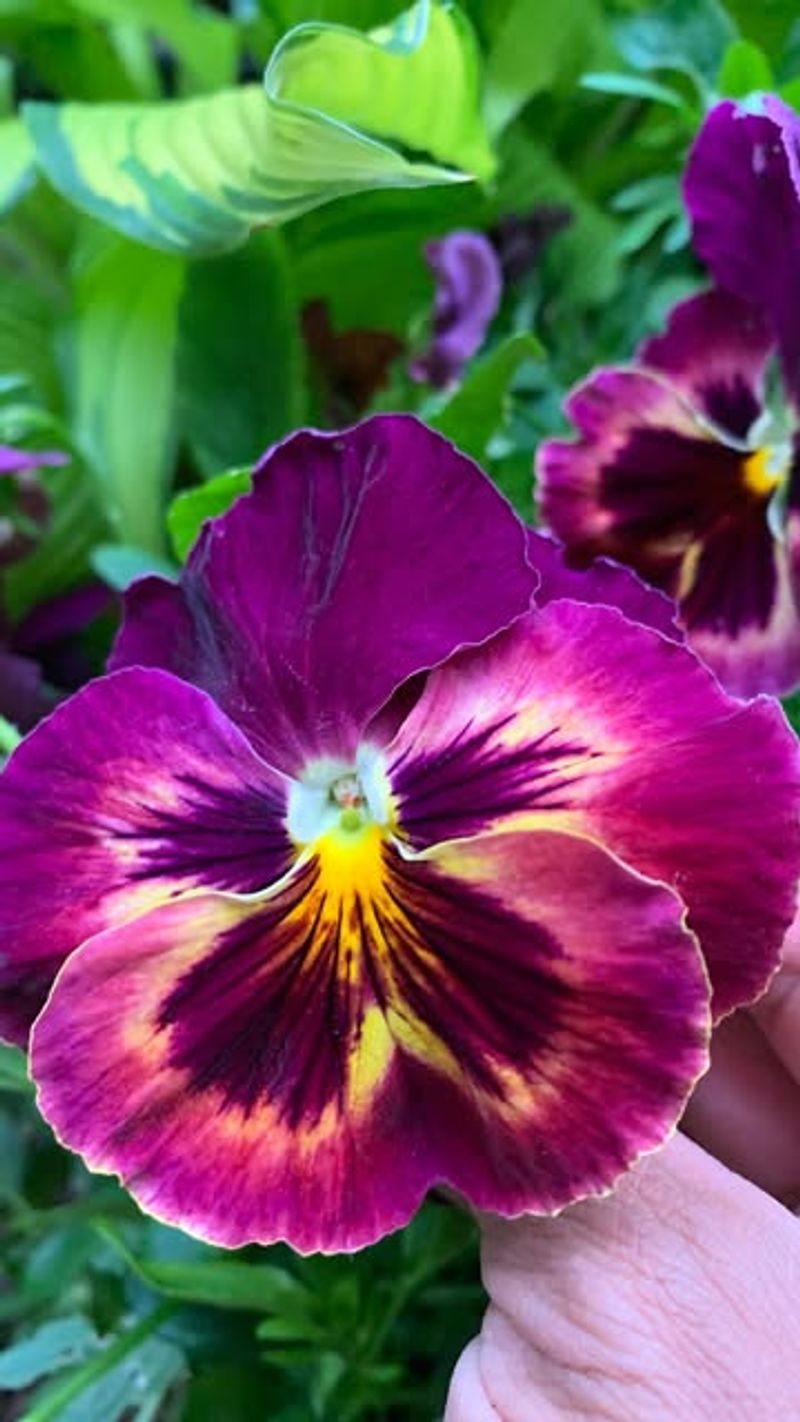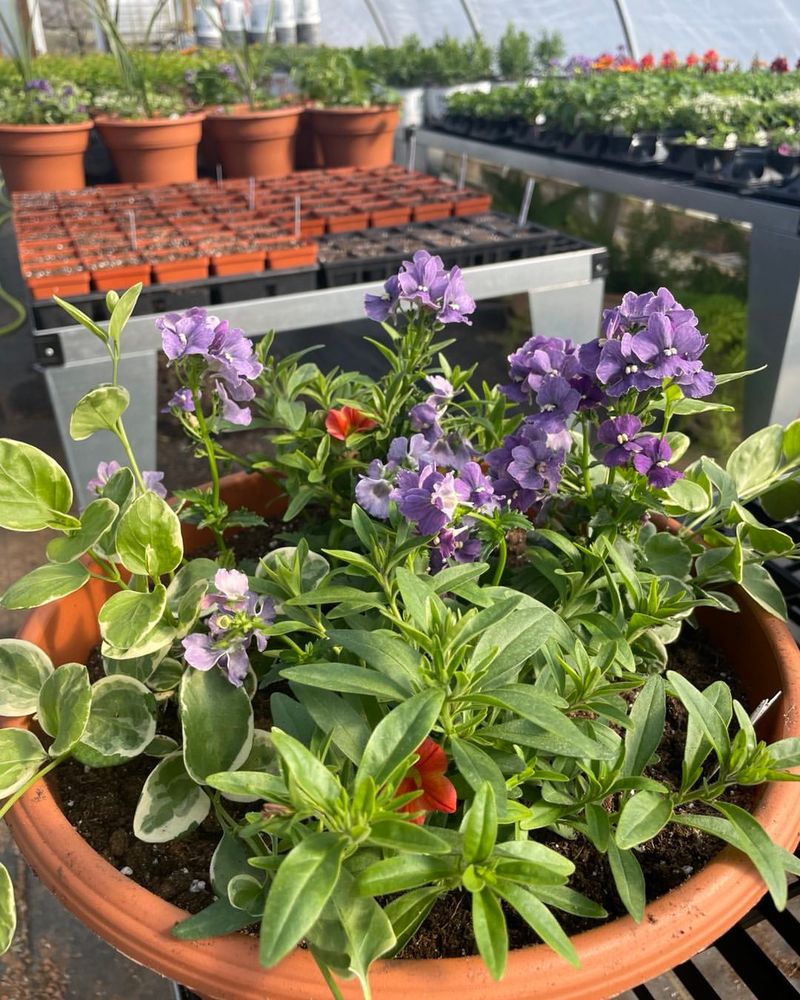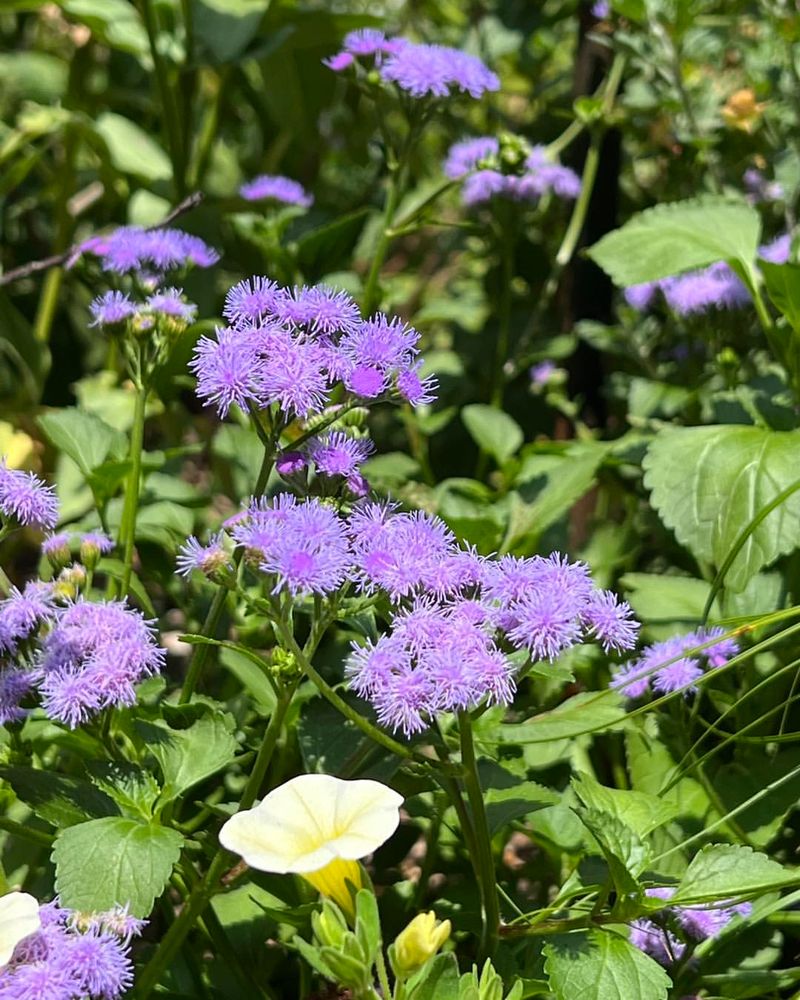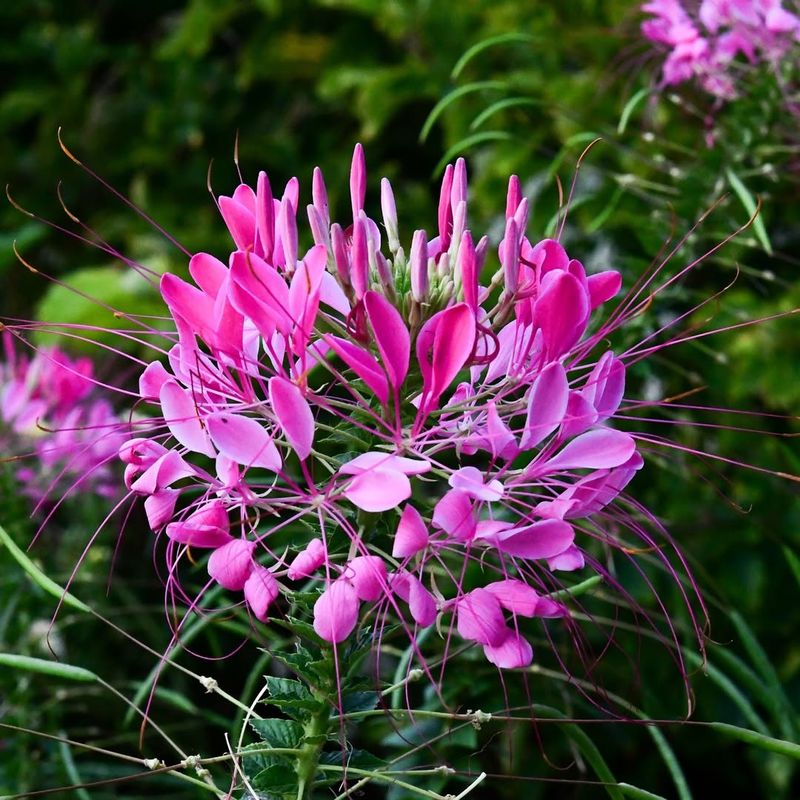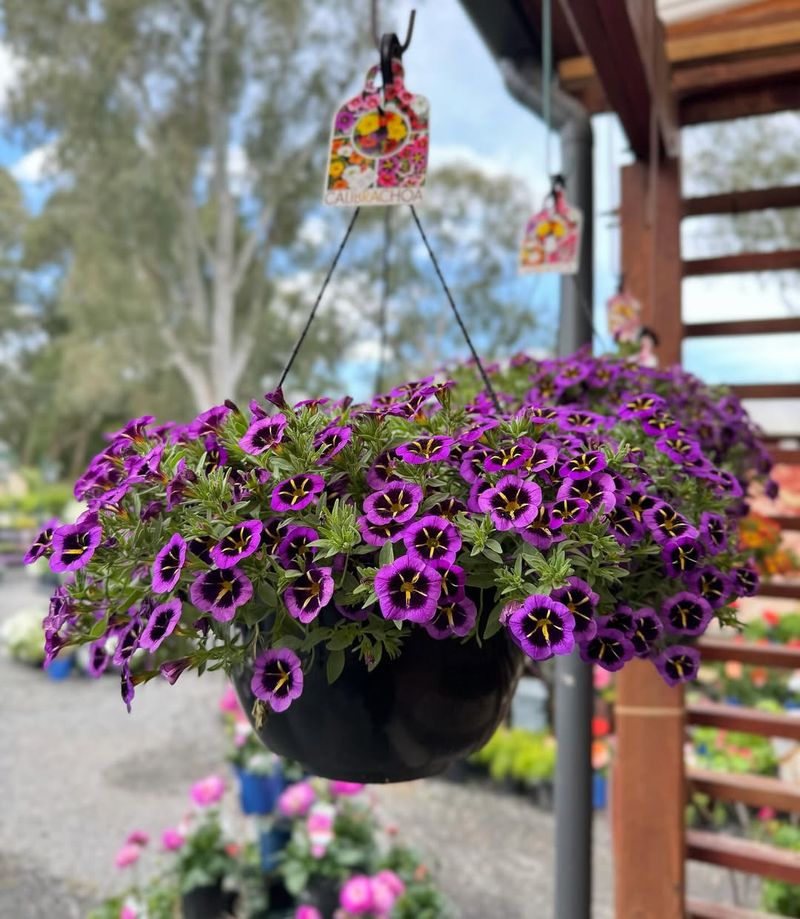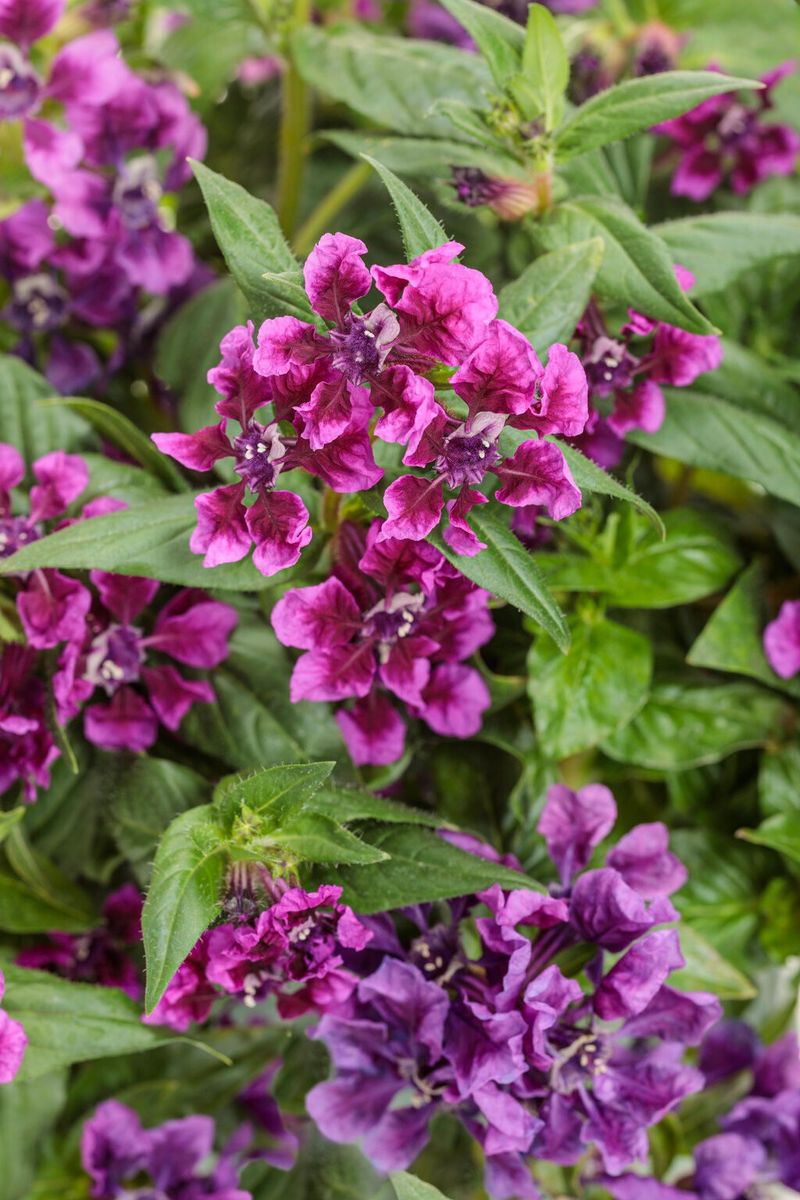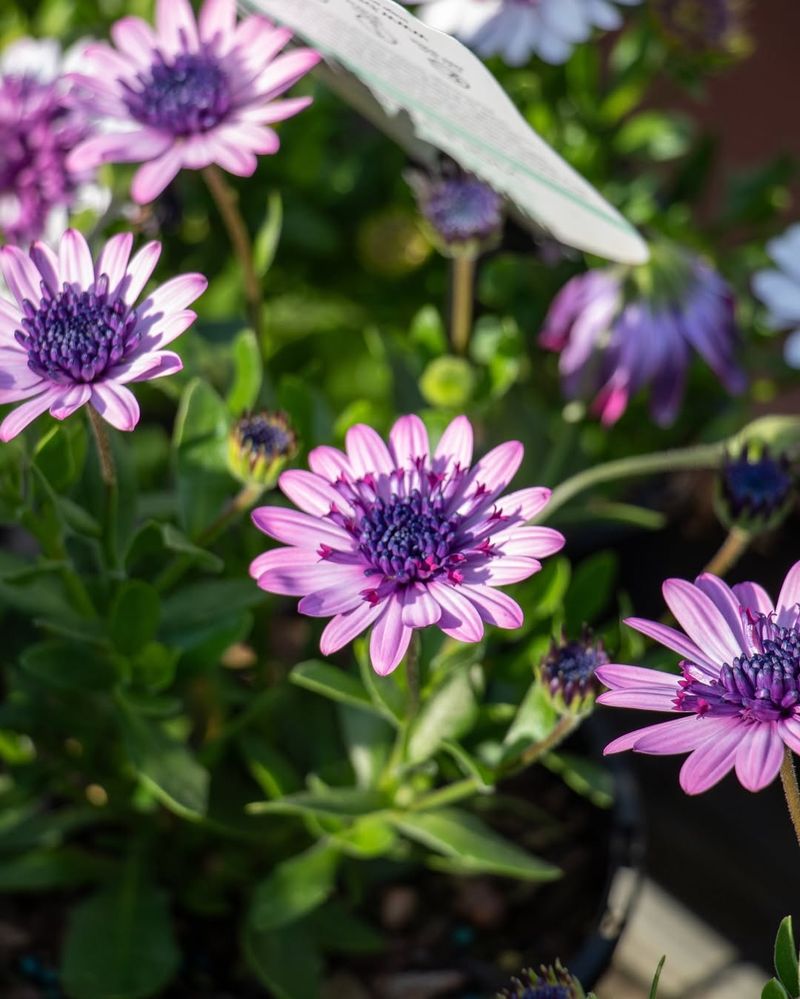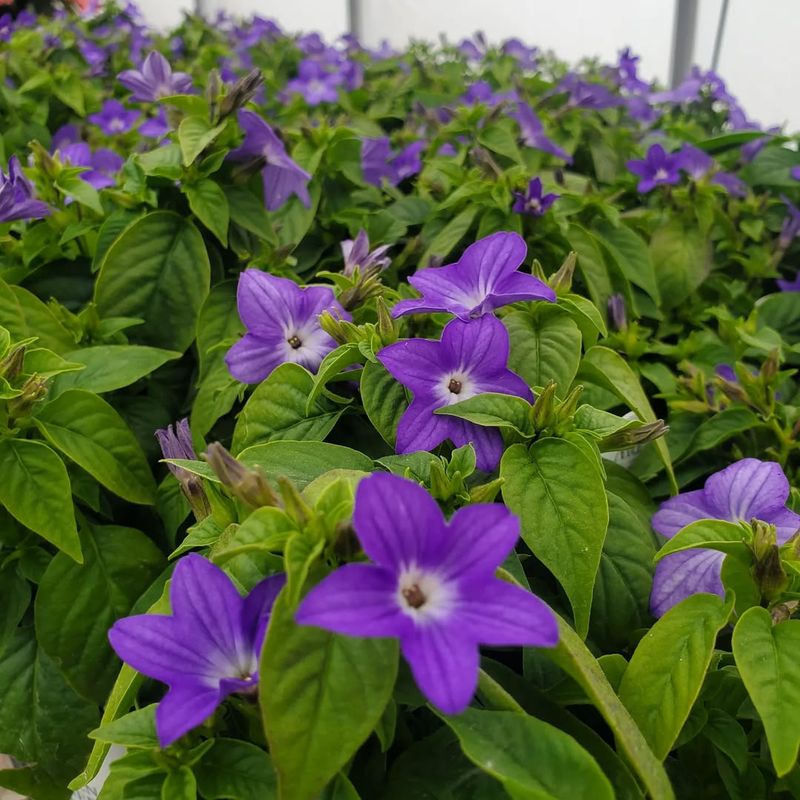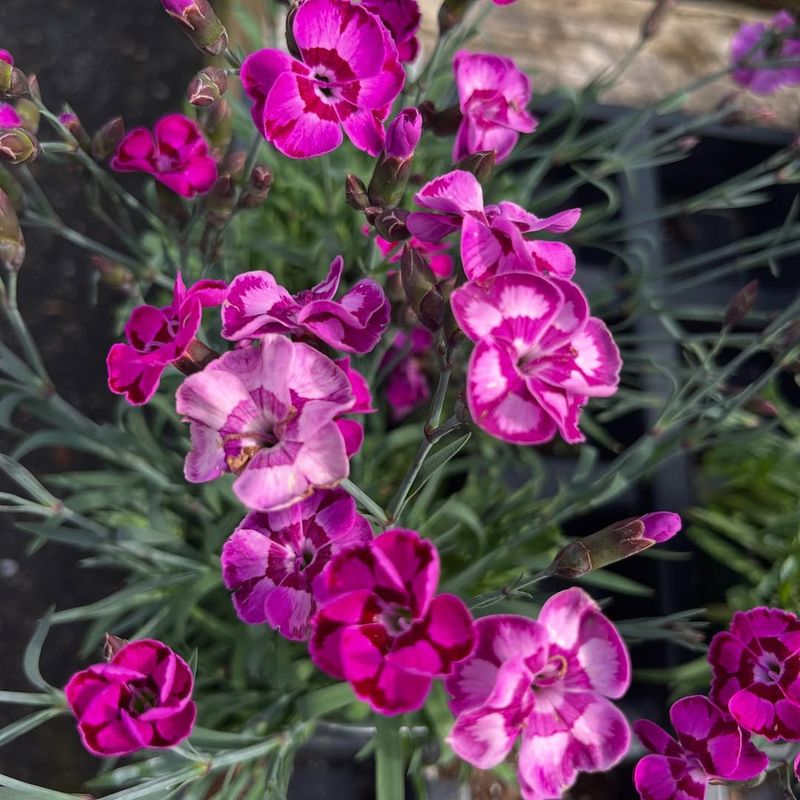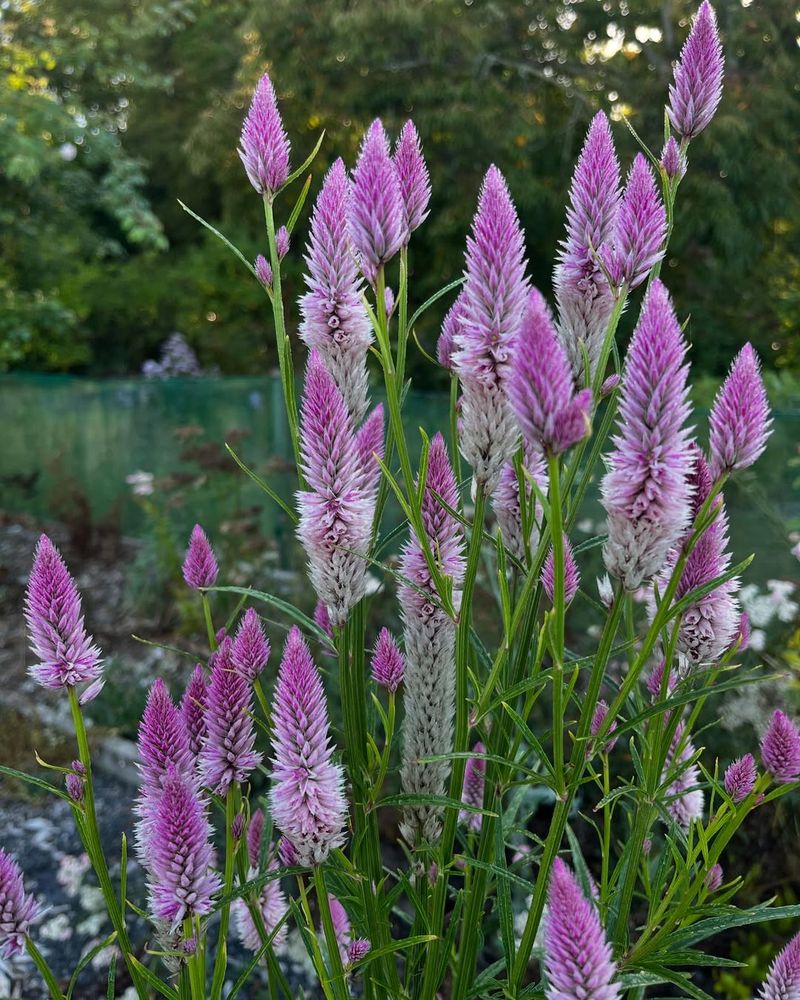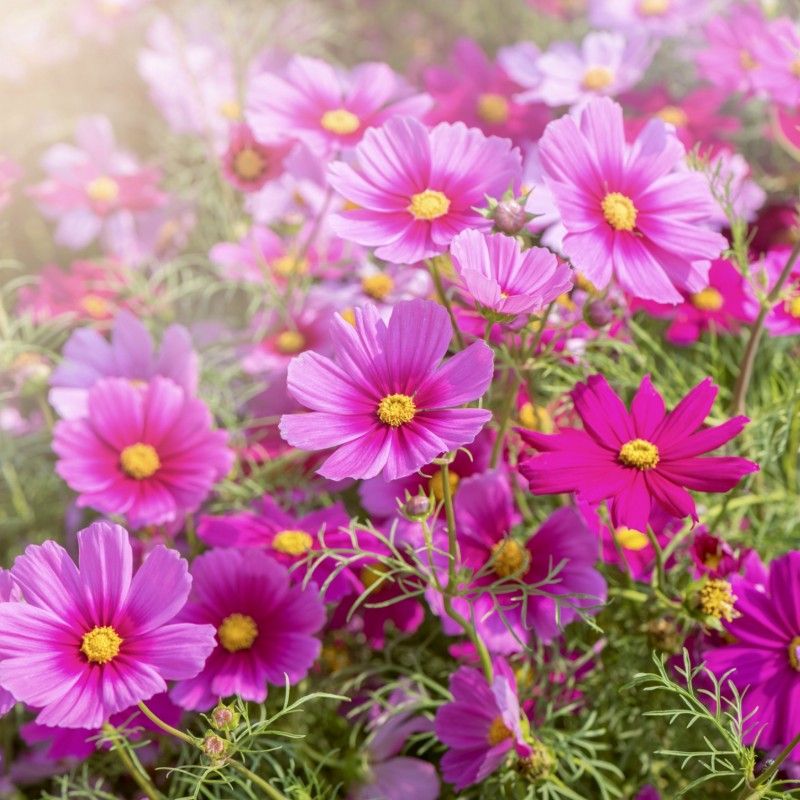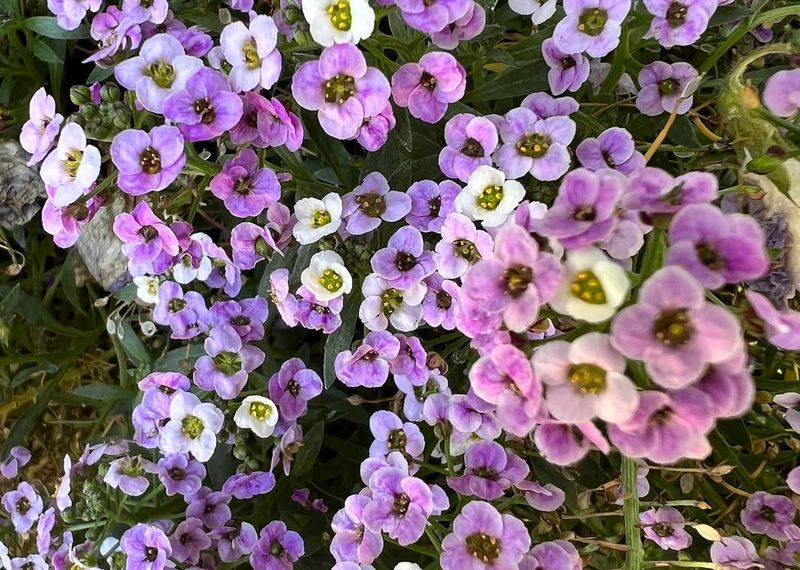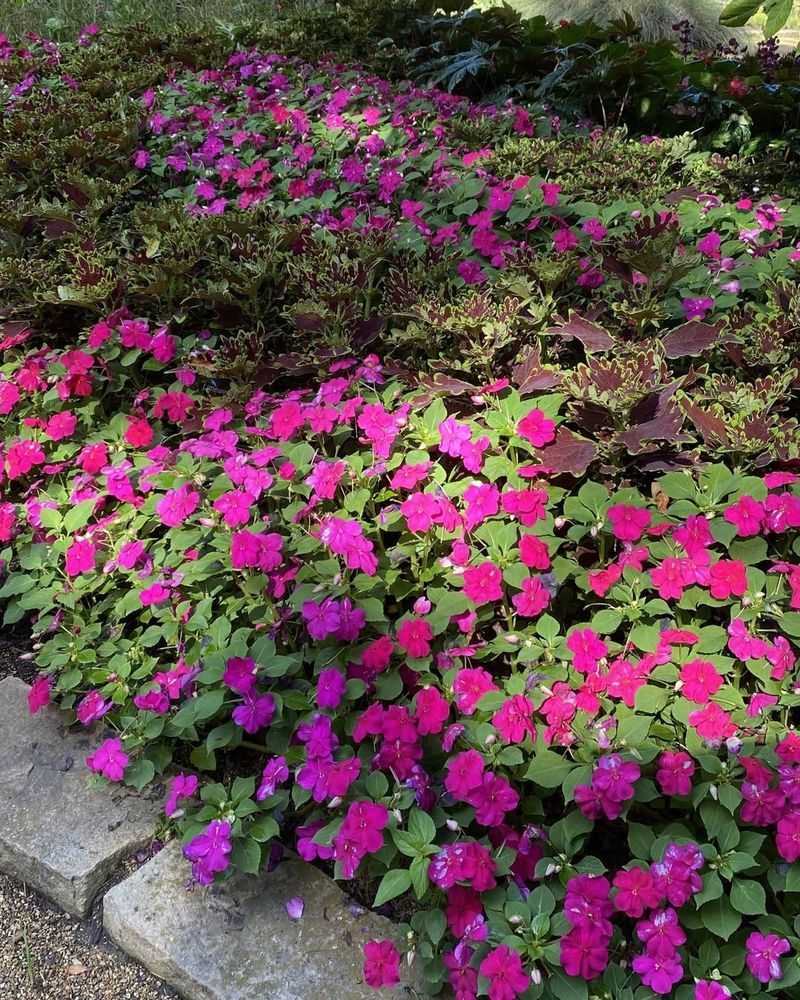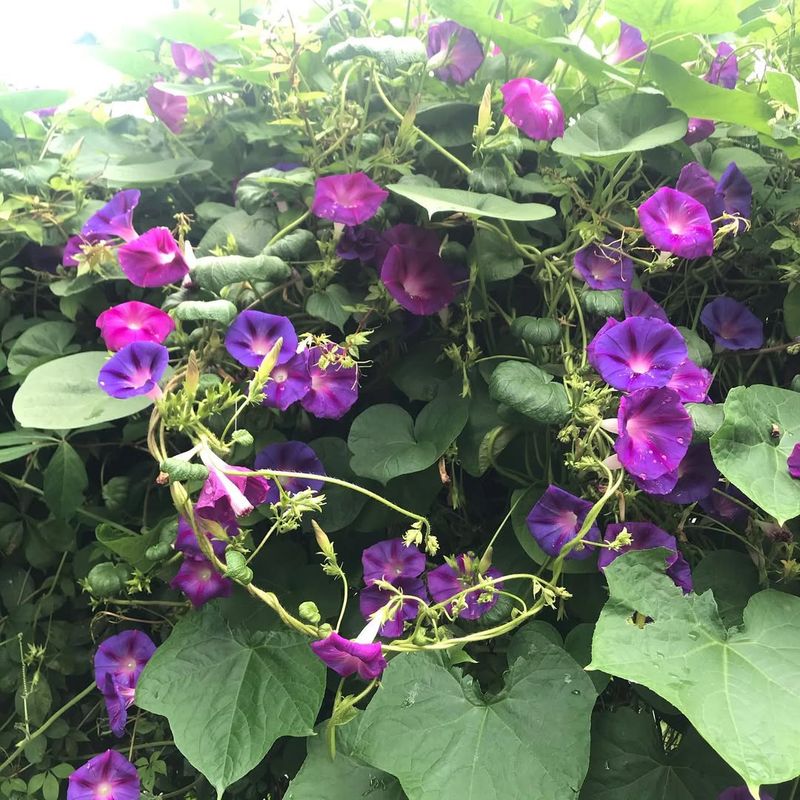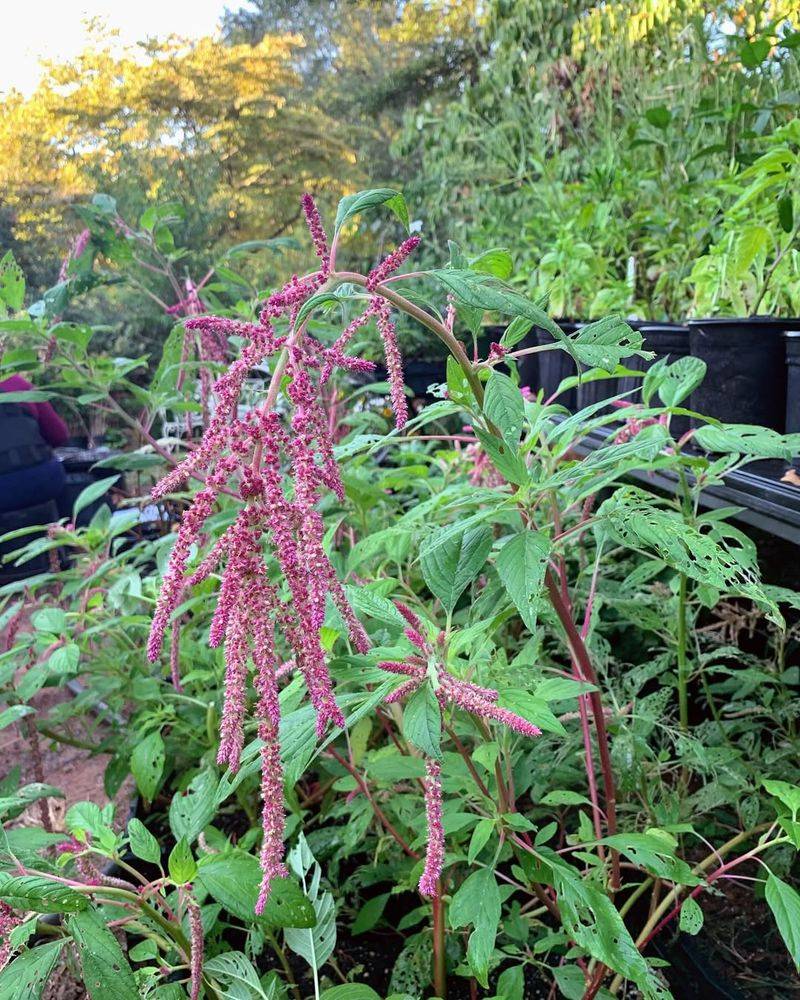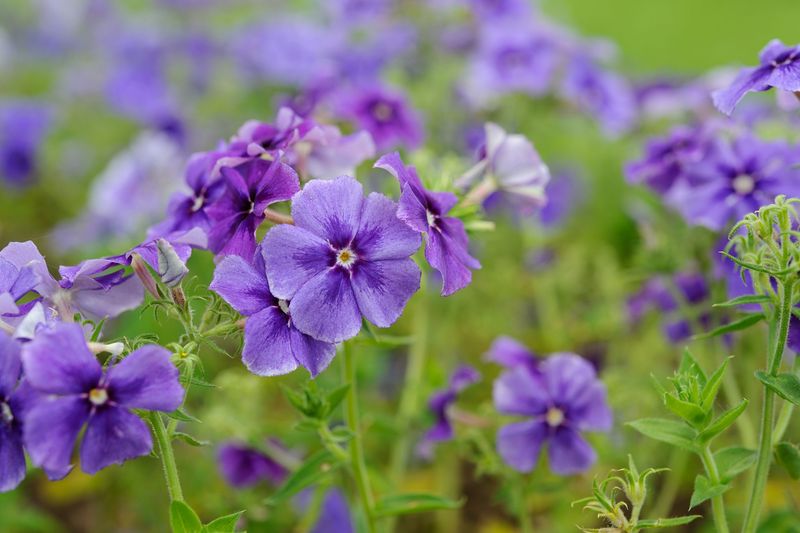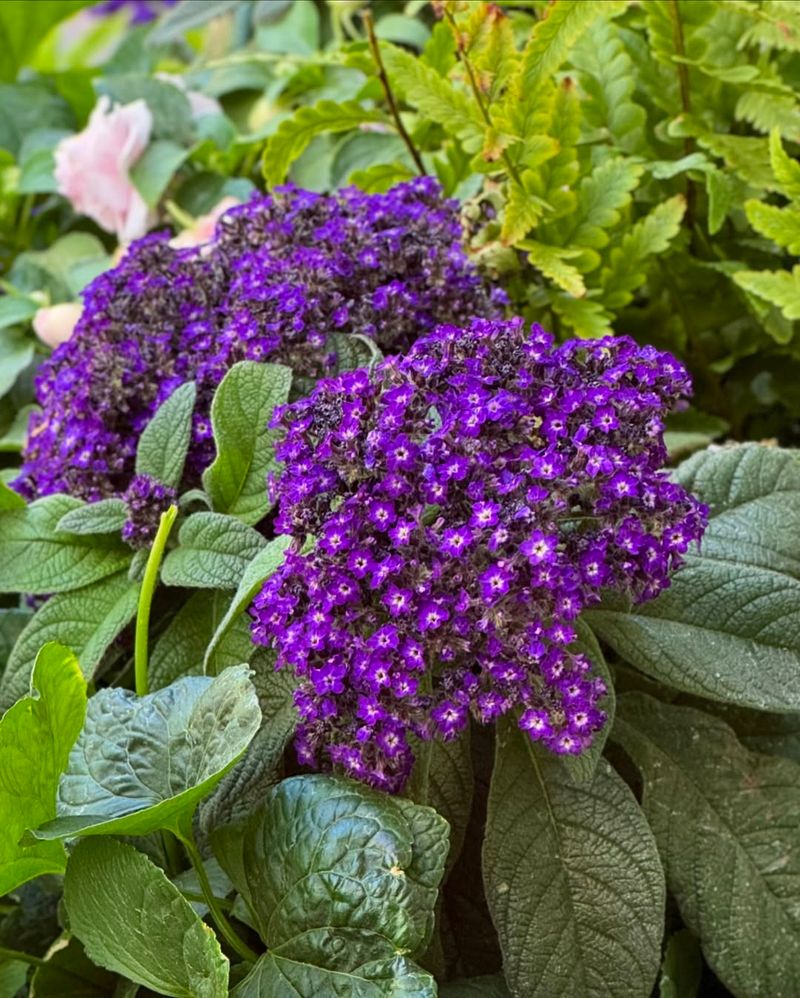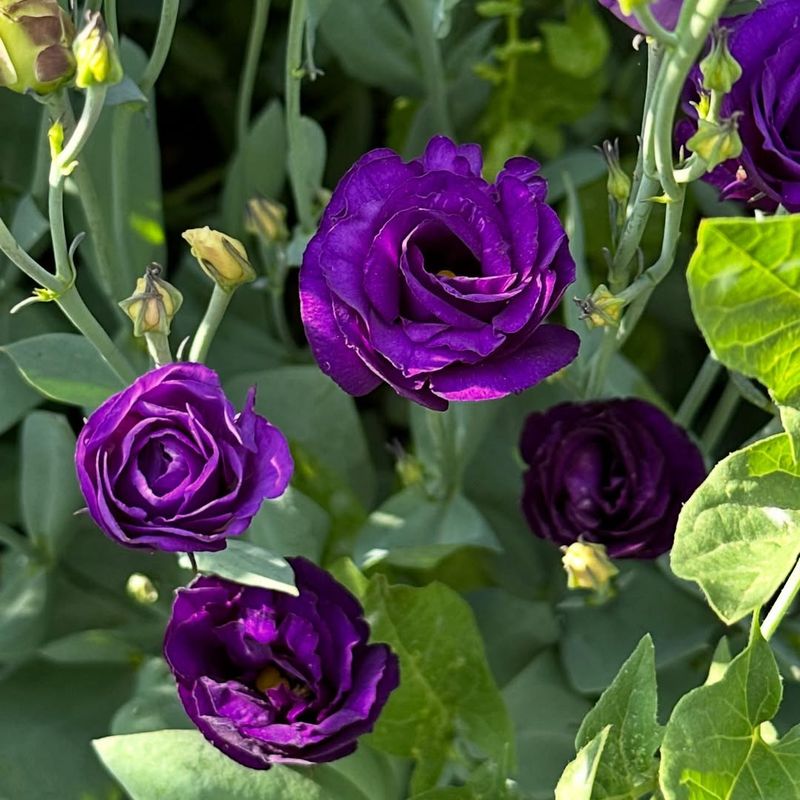Every garden lover knows the excitement of seeing vibrant colors burst into life. Purple stands out among them, with its royal and enchanting allure. Today, I’m sharing thirty purple annuals that will transform your garden into a stunning masterpiece. Each plant offers unique hues and textures, blending artfully to create a lively tapestry. Let’s explore these gorgeous annuals and how they can steal the show in your garden!
1. Petunia
Petunias are a classic garden favorite, known for their trumpet-shaped blooms and non-stop color through the warmer months. Their purple varieties come in velvety deep tones or cheerful lavender hues that practically glow in the sun.
Give them well-drained soil and full sun, and they’ll reward you with lush, sprawling mounds of blooms.
They’re fabulous in hanging baskets, window boxes, or massed in garden beds for an eye-catching display. Try mixing purple petunias with bright yellows or whites for a high-contrast combo that pops. Their sweet scent and generous bloom habit make them irresistible to both gardeners and pollinators.
2. Verbena
Verbena bursts onto the garden scene with stunning purple tones that demand attention. Known for its verbena charm, this annual thrives in sunny spots with well-drained soil. Regular deadheading keeps blooms coming and colors vibrant all season long.
Try planting verbena in hanging baskets, border fronts, or colorful container combos for maximum impact. It’s perfect for pollinator gardens, too, attracting bees and butterflies with ease. If you love a bold, lush look, Verbena is a must-have in your garden palette.
3. Lobelia
Lobelia dazzles with masses of tiny, deep purple or violet-blue blooms that seem to spill over everything they touch. It prefers cooler weather and partial sun, making it ideal for early spring or late summer plantings. Keep the soil moist and don’t let it dry out too much—this one likes a drink!
Lobelia’s trailing habit makes it a top pick for hanging baskets or edging garden beds. Pair it with white alyssum or soft pink geraniums for a pastel dream combo. It’s like a gentle purple waterfall wherever you plant it.
4. Salvia
Salvia brings bold spikes of purple blooms that stand tall like royalty in the garden. These hardy annuals thrive in full sun and well-drained soil, with blooms that keep coming if you snip off the spent ones. Their slightly fuzzy leaves and upright shape add texture and vertical interest.
Plant purple salvia as a striking backdrop in mixed beds or borders. They also look stunning in modern container arrangements paired with trailing greens or silver foliage.
Plus, bees and hummingbirds can’t get enough of them—prepare for a pollinator parade!
5. Sweet Alyssum
Sweet Alyssum is the definition of dainty, with a cloud of tiny, fragrant blooms in soft lavender or purple shades. It’s low-growing and spreads gently, making it ideal for edging or tucking into small spaces. This sun-lover prefers cooler temperatures and regular moisture to keep blooming.
Scatter sweet alyssum along pathways or at the front of flower beds for a scented, cottage-style look.
It pairs beautifully with pansies or snapdragons for early-season charm. And best of all—it self-seeds, so you may get a second round without lifting a finger.
6. Angelonia
Often called “summer snapdragon,” Angelonia offers elegant spires of purple flowers that handle heat like pros.
These tough little bloomers love full sun and tolerate dry spells, making them ideal for busy gardeners. Their narrow, upright habit makes them neat and tidy in both beds and pots.
Add angelonia to formal borders or combine it with trailing petunias for height and contrast in containers. It blooms steadily through summer without deadheading—talk about low maintenance! The soft fragrance is a sweet bonus when you brush by it.
7. Pansy
Pansies bring personality to any garden with their little “faces” and wide range of purple hues, from pale lilac to rich violet. These cool-season favorites do best in spring or fall and need moist, rich soil and morning sun. Keep them watered and pinched back for bushier, longer-lasting plants.
Plant them in clusters for a burst of color at the base of trees or in shallow bowls near entryways. Mix deep purple pansies with yellow or orange ones for an eye-popping combo. They’re also edible—perfect for garnishing spring salads or desserts!
8. Viola
Violas are like pansy’s daintier cousin, with smaller blooms but just as much charm. Their purple varieties range from soft and shy to boldly royal, and they thrive in cool weather with moist soil. They bounce back quickly after rain or a light frost, making them a reliable spring pick.
Use violas in whimsical garden borders, fairy gardens, or scattered through herb beds. Their petite size makes them great fillers between larger annuals. Like pansies, they’re edible—and look adorable on cupcakes.
9. Nemesia
Nemesia may be small, but it packs a punch with clusters of purple blooms that smell faintly of vanilla. It loves cool temps and needs regular watering to stay lush and full. Plant it in part sun and deadhead often to keep it flowering strong.
Try nemesia in decorative pots by the front door or mixed into early-season borders with snapdragons and diascia. Its soft, rounded form brings a romantic touch to any space. Bonus: it bounces back quickly if it gets a bit stressed.
10. Ageratum
Ageratum brings fluffy, cushion-like purple blooms that look almost too perfect to be real. Their soft texture and subtle charm make them a gentle accent in any garden.
They love full sun but can tolerate partial shade, and they bloom best in moist, well-draining soil. Deadhead regularly to keep the flowers coming and the plant looking tidy.
Tuck ageratum into the edges of garden beds, or plant them en masse for a dreamy lavender-blue haze. They’re also great companions to bolder blooms like marigolds or zinnias, creating a gorgeous contrast.
11. Cleome
Cleome, also known as spider flower, adds drama with its tall stems and spidery purple-pink blooms. It has an airy, whimsical shape that gives garden beds vertical interest and movement.
It thrives in full sun and can handle dry soil once established, making it perfect for low-maintenance borders. Cleome self-seeds freely, so you’ll often find pleasant surprises the following season.
Plant it toward the back of the garden for a bold, almost sculptural presence. And if you love pollinators, you’ll adore Cleome—it’s a magnet for bees and butterflies.
12. Calibrachoa
Calibrachoa, often called “million bells,” brings nonstop blooms in jewel-toned purple shades that spill beautifully over containers. It looks like a mini petunia, but it tends to bloom even more abundantly.
These sun-loving plants need good drainage and regular feeding to keep up their floral fireworks. They’re generally low-maintenance, but respond well to an occasional trim for fuller growth.
Use them in hanging baskets, window boxes, or as a trailing filler in mixed containers. Calibrachoa’s dense display of color makes it a go-to for instant garden glamour.
13. Scaevola
Scaevola stands out with its fan-shaped purple blooms that radiate like tiny half-daisies. It’s one of the most heat- and drought-tolerant trailing annuals you can grow.
This low-maintenance beauty thrives in full sun and well-drained soil, blooming all summer with little fuss. Once it’s established, it rarely needs deadheading.
Scaevola is stunning in hanging baskets and mixed containers, where its trailing blooms create a waterfall of color. Try pairing it with lime-green foliage for an unexpected and modern combo.
14. Cuphea
Cuphea, sometimes called “cigar plant,” produces a flurry of tubular purple blooms that bring playful texture to the garden. Some varieties even have bright magenta tips that resemble little glowing embers.
It loves the heat and sun, and will bloom steadily with just occasional deadheading. Keep the soil moist but not soggy, and it’ll keep going strong until frost.
Use Cuphea to fill out garden borders or add flair to mixed patio planters. It also attracts hummingbirds like crazy—so it’s a win for wildlife and gardeners alike.
15. Osteospermum
Osteospermum, or African Daisy, brings bold, daisy-like blooms in striking shades of purple with eye-catching centers. These blooms have a slightly iridescent quality, making them shimmer in the sunlight.
They love full sun and cooler weather, often blooming best in early spring and fall. Keep the soil evenly moist and trim back faded flowers to encourage more blooms.
Use Osteospermum in containers or line garden pathways for a crisp, modern look. They’re a perfect match for silver foliage or ornamental grasses in mixed borders.
16. Browallia
Browallia, also known as bush violet, is a soft-spoken beauty with velvety purple flowers that bloom in partial shade. Its gentle mounding habit makes it feel lush and full without overwhelming nearby plants.
It thrives in filtered light and appreciates moist, well-drained soil—making it perfect for shadier spots where other annuals might sulk. It’s also surprisingly heat-tolerant.
Try planting Browallia in patio containers or under taller annuals and perennials as a ground-hugging accent. Its understated beauty adds depth and color to layered planting schemes.
17. Nicotiana
Nicotiana, or flowering tobacco, produces trumpet-shaped blooms that open wide in purples and pinks, especially in the evening. Their light, sweet fragrance really comes alive at dusk.
They prefer full to partial sun and well-drained soil, and regular watering helps them bloom reliably. Taller varieties may need staking to keep their elegant stems upright.
Nicotiana is lovely planted near porches or patios where its scent can be appreciated during summer evenings. It also pairs well with airy, cottage-style companions like cosmos or larkspur.
18. Snapdragon
Snapdragons bring spiky towers of color to the garden in all shades of purple—from deep plum to soft lavender. Their blooms resemble tiny dragon faces, which “snap” open when squeezed—making them a favorite for kids and whimsical gardeners.
They prefer cooler temps and thrive in rich, moist soil with full to partial sun. Pinch back early to encourage branching and keep blooms coming.
Snapdragons are perfect for borders or as vertical accents in mixed planters. They also make excellent cut flowers for cheerful indoor arrangements.
19. Torenia
Torenia, or wishbone flower, offers tubular purple blooms with bright yellow throats and unique markings. This cheerful shade-lover blooms prolifically, even in the heat of summer.
It does best in partial to full shade with evenly moist soil and high humidity. Deadheading isn’t necessary, making it wonderfully easygoing.
Use Torenia in shady containers, hanging baskets, or tucked under taller plants in woodland gardens. It’s a great choice for adding unexpected color to lower-light areas.
20. Dianthus
Dianthus, often called “pinks,” brings charming, clove-scented blooms in shades of violet and plum. Their frilly petals and silvery foliage give them a classic, romantic vibe.
They love full sun and well-drained soil, and thrive when deadheaded regularly to extend blooming. They’re surprisingly tolerant of dry spells once established.
Dianthus looks beautiful in cottage gardens, rock borders, or tucked into herb gardens for a fragrant surprise. Try pairing them with dusty miller or lavender for a soft, textured combo.
21. Celosia
Celosia is like fire in flower form—with its feathery plumes or brainy crests in electric purple shades. It’s bold, unique, and guaranteed to turn heads in the garden.
This sun-lover thrives in heat and doesn’t mind dry spells, making it a great low-maintenance showpiece. Just plant it in rich, well-drained soil and let it shine.
Use celosia in statement pots or place it front-and-center in a border for maximum drama. It also dries beautifully, so save some blooms for indoor arrangements!
22. Zinnia (Purple Prince)
Zinnia ‘Purple Prince’ is a garden powerhouse with saturated, royal-purple blooms that are bold and unmissable. These blooms are large, long-lasting, and absolutely adored by butterflies.
Plant zinnias in full sun with well-drained soil, and they’ll keep blooming with regular deadheading. They’re one of the easiest annuals to grow from seed.
Perfect for cutting gardens, these beauties last forever in a vase. Try them alongside yellow or coral zinnias for a stunning summer bouquet that practically glows.
23. Cosmos (Versailles Mix)
Cosmos from the Versailles Mix offer dreamy, daisy-like blooms in soft purple shades with airy foliage that dances in the breeze. They’re light, graceful, and incredibly easy to grow.
They love hot, dry spots and don’t need rich soil—in fact, too much fertilizer can limit blooms. Deadhead regularly or let them self-seed for a more natural look.
Cosmos are wonderful in wildflower-style gardens or back borders where they can sway freely. They also make excellent cut flowers and attract butterflies all season long.
24. Alyssum (Royal Carpet)
Alyssum ‘Royal Carpet’ spills with tiny purple blooms that smell like honey and form dense, ground-hugging mats. It’s a low-growing annual that makes a big impression in small spaces.
This plant loves cool weather, full sun to partial shade, and moist, well-drained soil. It’s perfect for early spring or fall plantings.
Line pathways, fill in between stepping stones, or let it cascade from containers and window boxes. It’s a fragrant, delicate-looking filler that works hard to tie designs together.
25. Impatiens (Purple varieties)
Purple impatiens are a lifesaver for shady spots, blooming effortlessly with velvety petals in jewel-like tones. They’re lush, leafy, and practically glow in lower light.
Impatiens thrive in partial to full shade with consistently moist, well-drained soil. They appreciate regular watering and occasional feeding for season-long blooms.
Use them to blanket shaded beds, brighten the base of trees, or fill in under taller plants. Their nonstop color and tidy shape make them a go-to for effortless beauty in low-light areas.
26. Morning Glory (Grandpa Ott)
‘Grandpa Ott’ Morning Glory is a classic heirloom with rich, royal purple flowers and a brilliant pink throat. The blooms open fresh each morning, climbing skyward with ease.
It loves full sun and will race up trellises, fences, or arbors with just a little guidance. Soak seeds overnight before planting to speed up germination.
This fast-growing vine is perfect for covering unsightly walls or creating a living privacy screen. You’ll love the dramatic look and daily surprise of fresh, new blooms.
27. Amaranthus
Amaranthus stuns with long, flowing tassels in deep plum or burgundy, giving gardens a bold, ornamental look. Its sculptural form adds drama and height wherever it’s planted.
It thrives in full sun with average soil and handles heat like a champ. Taller varieties may need staking to stay upright in the wind.
Use it as a vertical accent in floral beds or in a “dark garden” with purples, blacks, and deep reds. Amaranthus also makes for stunning dried arrangements that last all year.
28. Phlox Drummondii
Phlox Drummondii bursts with clusters of star-shaped flowers in vibrant purples and violets. These cheerful blooms add a pop of color wherever they land.
They prefer full sun and rich, moist soil, though they’re fairly adaptable. Deadhead to encourage fresh blooms and keep the plant tidy.
Use them in borders, containers, or even as a colorful filler in wildflower mixes. Their slightly sweet scent draws butterflies and pollinators like a magnet.
29. Heliotrope
Heliotrope offers deep purple flower clusters with a fragrance that’s often compared to vanilla or cherry pie. It’s a classic favorite for scent-driven gardeners.
This sun-loving annual enjoys rich, moist soil and blooms best with regular deadheading. Be sure to protect it from chilly nights.
Tuck heliotrope near seating areas or open windows where you can enjoy its perfume. It pairs beautifully with white flowers or soft greenery in containers.
30. Lisianthus
Lisianthus looks like a rose, feels like silk, and brings elegance to any garden with its lush, layered petals in shades of royal purple. It’s a florist’s favorite for good reason.
This annual needs full sun, rich soil, and patience—it grows slowly but blooms like a dream. Keep the soil moist but never soggy.
Plant lisianthus in cutting gardens or feature beds where it can stand out. It adds a romantic, luxurious vibe to both flower beds and fresh bouquets.

